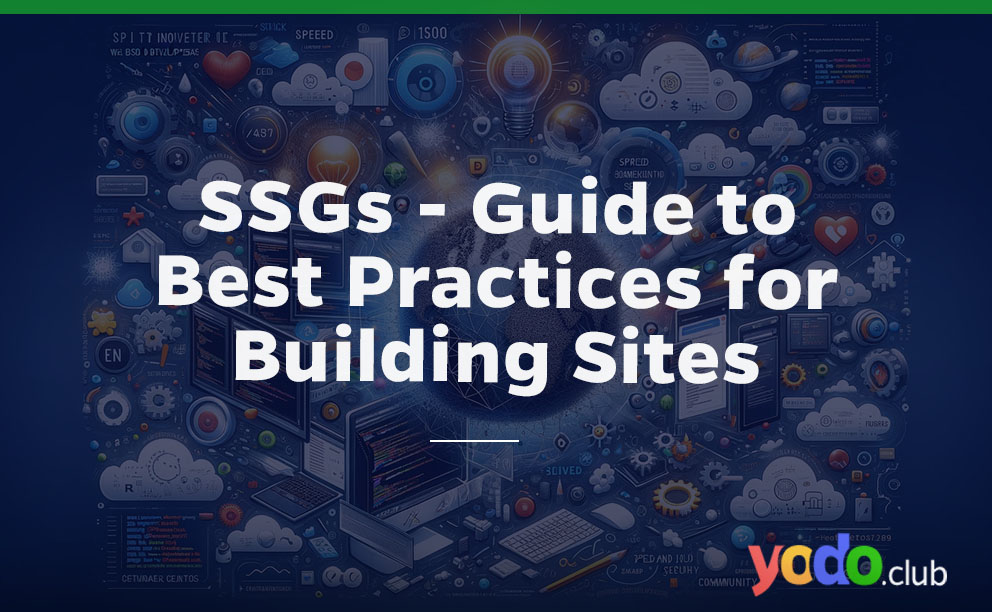Your website’s design has a significant impact on the success of your online business. Studies show that visitors form an opinion about your website in just 0.05 seconds!
So you must take these statistics seriously to avoid absolute failure and achieve huge success in digital branding. It all boils down to web design and how quickly people scan your website for what they need. Thus, it’s crucial to get your website design right. Otherwise, customers will likely spend their business elsewhere.
That means your content must be optimized for quick decision-making, and effective use of intuitive graphics and images will take you far in the world of digital marketing.
However, many businesses make website design mistakes that can hurt their online presence. In this article, we’ll explore the top website design mistakes that can ruin your online business and provide tips on how to avoid them.
Table of Contents
1. CEO Sleeps with Farm Animals
One of the most bizarre and damaging ways to ruin a business legally is through a monitoring failure, and nothing exemplifies this more than a scandal involving the CEO and farm animals. Maintaining a professional image is crucial for any business, especially online where reputation spreads like wildfire. To avoid such a catastrophic event, implement robust monitoring systems that not only track business metrics but also keep a close eye on employee behavior and adherence to ethical standards.
2. Not Setting a Strategic Plan
Another surefire way to ruin a company is by neglecting the importance of a strategic plan. Without a clear roadmap, a business may find itself wandering aimlessly, susceptible to market fluctuations and unforeseen challenges. To prevent this, invest time in developing a comprehensive strategic plan that outlines your business goals, target audience, marketing strategies, and potential growth areas. Regularly revisit and revise the plan to ensure it stays relevant in the dynamic online business landscape.
3. Overcomplicating Navigation
In website design, it is common to overcomplicate navigation menus, making it challenging for visitors to find the information they need. This may lead to frustration and high bounce rates.
To avoid this, website owners should aim to simplify their navigation menus by grouping related pages and using clear labels and logical categories. Navigation menus should be easily accessible from any page on the website, with an intuitive design that prioritizes the user experience.
Examples of effective navigation menus include drop-down menus, hamburger menus, and tabbed navigation. These designs help to streamline the user experience and make it easy for visitors to find what they need. By prioritizing easy navigation, businesses can improve the user experience and keep visitors on their sites for longer.
4. Going Live without Testing
In the fast-paced digital environment, the pressure to launch quickly can be overwhelming. However, rushing into the online sphere without thorough testing is a recipe for disaster. Going live with untested systems or products can lead to technical glitches, poor user experiences, and negative customer reviews. To avoid this pitfall, prioritize rigorous testing of your website, applications, and any online offerings before launching. Conduct beta tests, gather user feedback, and address any issues proactively to ensure a smooth and successful launch.
5. Not Having a Clear Call to Action
A call-to-action (CTA) button is an invaluable asset for any website or online business. Labeled and visible buttons are essential for improving conversions and walking visitors through the desired action. Without a clear call to action, web visitors may become confused or fail to understand what they can do on the site.
To avoid this mistake, website owners must identify their desired actions for visitors and ensure that their CTAs are visible and placed strategically throughout the website. Effective CTAs should be concise, clear, and visually appealing. Examples of effective CTAs include “Buy Now,” “Subscribe,” and “Download Our Guide.”
By providing clear guidance to visitors on desired actions, a CTA can significantly enhance the user experience and boost website conversions.
6. Ignoring SEO Best Practices
It’s important to pay attention to search engine optimization (SEO) when designing a website. Ignoring SEO best practices can lead to low search rankings, resulting in reduced website traffic and revenue loss.
To avoid this, website owners should prioritize optimizing their website for search engines by implementing on-page SEO best practices. This includes using descriptive page titles and meta descriptions, structuring content with header tags, and adding alt text for images.
However, it’s important to avoid common SEO mistakes such as keyword stuffing and neglecting backlinks, which are links from other websites to your own.
By following SEO best practices, website owners can improve their website’s search engine rankings, increase traffic, and ultimately drive more revenue to their business.
7. Failing to Optimize for Mobile (Unresponsive UI)
As the use of mobile devices continues to grow, websites must be optimized for mobile users. Responsive design ensures a website is functional and looks good on any device, including smartphones and tablets. Without responsive design, mobile users may find it difficult to navigate a website or view its content, leading to a poor user experience and high bounce rates.
To avoid this mistake, website owners should prioritize responsive design and test their websites on multiple devices to ensure functionality. Mobile-friendly websites should have easy-to-use navigation, fast load times, and content that is easily readable on smaller screens.
Websites like Google, Facebook, and Amazon are good examples of mobile-friendly design. They were designed with mobile users in mind, providing an optimal user experience on any device.
8. Neglecting Website Loading Speed
Website speed is crucial to web design. If a website loads slowly, it may lead to a high bounce rate and decreased user engagement. Moreover, search engines consider website speed as a ranking factor, which means slow websites may not rank well in search results.
To avoid this mistake, website owners should prioritize website speed and make sure their website loads quickly on all devices. Several tools are available to test website speed, including Google’s PageSpeed Insights, which provides suggestions for improving load times.
Examples of ways to improve website speed include optimizing images and videos, using a content delivery network (CDN), and minimizing HTTP requests. By prioritizing website speed, website owners can improve the user experience, increase engagement, and improve their search engine rankings.
9. Using Too Many Fonts and Colors
Using multiple fonts and colors in website design may seem appealing, but it is crucial to maintain a unified visual brand. Employing too many fonts and colors may result in a disordered and unprofessional website, leading to a negative user experience.
To avoid ruining your online reputation, you must restrict the number of fonts and colors utilized in your website design. Also, choose a primary font and color palette that reflect your brand and employ them consistently throughout the website.
The online presence of brands such as Apple, Nike, and Coca-Cola are the best examples of websites with successful use of typography and color schemes. These companies have developed a consistent visual identity that resonates with their audience and reinforces their brand message. By prioritizing visual branding, businesses can establish a strong brand identity and enhance the user experience.
10. Lack of Accessibility
Website accessibility is a critical aspect of website design that should not be ignored. It’s important that all users, regardless of their abilities, can access and use a website without difficulty. Failing to consider accessibility can result in a poor user experience and legal consequences.
To avoid this mistake, website owners should ensure their website complies with accessibility standards such as Web Content Accessibility Guidelines (WCAG) 2.1. This includes implementing features like alt text for images, descriptive link text, and keyboard navigation.
There are accessibility features and testing tools that website owners can use to ensure their website is accessible. For instance, Microsoft’s Accessibility Insights tool can help identify accessibility issues on a website, and the UserWay Accessibility Widget can provide accessibility features like text resizing and color contrast adjustment.
By prioritizing website accessibility, website owners can improve the user experience for all users and avoid legal issues related to discrimination against individuals with disabilities.
11. Cluttered and Inconsistent Design
A website design that is cluttered and inconsistent can negatively affect the user experience and result in a high bounce rate. Therefore, website owners must prioritize a clean and consistent design.
A cluttered design may contain too many elements on a page, making it difficult for users to find the information they need. Similarly, an inconsistent design can confuse users, as different sections of the website may have varying visual styles.
To avoid this mistake, website owners should aim for a clean and consistent design by using a uniform color scheme, typography, and layout throughout the website. This can help users easily navigate the website and find the information they need.
Websites that have multiple font styles, colors, and layout structures on a single page are examples of cluttered and inconsistent website designs. Such designs can overwhelm and confuse users, leading to a negative user experience.
12. Poor Content Strategy
Only authoritative and engaging content grabs the users’ attention and converts them into customers. And you can’t expect the quality without developing a proper content strategy. Neglecting to prioritize content strategy can lead to low engagement and high bounce rates, negatively impacting website performance. To avoid this mistake, website owners should prioritize providing valuable and relevant content to visitors.
An effective content strategy involves understanding the target audience and providing content that meets their needs and interests. Website owners can create informative blog posts, videos, infographics, and other types of content that provide value to visitors. Optimizing content for search engines by using relevant keywords and providing meta descriptions and alt text for images is also important. This can help improve search engine rankings and attract more visitors to the website.
Examples of successful content strategies include websites that regularly provide high-quality and informative content, such as industry news, tutorials, and how-to guides. These websites often use a mix of different types of content to engage visitors and keep them coming back for more.
13. Neglecting Security
Website security is a crucial aspect of website design that must not be ignored. Failing to prioritize security can lead to security breaches, loss of data, and damage to the business’s reputation. Thus, website owners must take the necessary precautions to safeguard their website and users’ sensitive information.
Some common website security vulnerabilities are:
-
- Weak passwords: Passwords should be strong, complex, and changed frequently to prevent unauthorized access to the website.
- Outdated software: Older software versions are more vulnerable to attacks. Therefore, it’s essential to keep the website’s software updated to the latest version.
- Lack of encryption: Websites handling sensitive information like credit card details and personal data should have encryption protocols in place to protect such information.
- Malware and viruses: Websites can be infected with malware and viruses that can harm users’ computers and steal their data.
Website owners can address these vulnerabilities by implementing the following measures:
-
- Use a strong password policy and prompt users to change passwords regularly.
- Keep software up-to-date and patch any known security vulnerabilities.
- Implement encryption protocols like SSL and TLS to protect sensitive information.
- Use anti-virus software and malware scanners to detect and remove any malicious software on the website.
By taking these security measures, website owners can protect their website and users’ information and maintain a positive business reputation.
14. Not Analyzing User Data
Designing a website that is both functional and effective requires more than just aesthetics. Analyzing user data is crucial to ensuring that the website meets its goals. By monitoring user engagement and behavior, website owners can uncover insights into how visitors interact with their site, find areas for improvement, and make data-driven decisions to enhance the user experience and reach business objectives.
It’s important to track user data in real-time and on an ongoing basis to make informed decisions. Metrics such as page views, bounce rate, time spent on the site, click-through rate, and conversion rate are among the most important to track.
Analytics tools like Google Analytics, Hotjar, and Mixpanel can provide valuable insights into user behavior and engagement.
In addition to tracking metrics, it’s also essential to analyze user data to identify patterns and trends. By segmenting users based on demographics, behavior, and other criteria, website owners can gain a deeper understanding of their target audience and tailor their websites to meet their needs.
Neglecting to analyze user data can result in missed opportunities and wasted resources. By leveraging user data and making informed decisions, website owners can enhance the user experience, increase engagement and conversions, and ultimately achieve their business goals.
Frequently Asked Questions
1. What is ORM in business?
ORM stands for Online Reputation Management. It involves strategies and techniques employed by businesses to monitor, influence, and control their online reputation. The goal is to ensure that a company’s online image is positive and accurately reflects its values, products, and services.
2. What is an online reputation tool?
An online reputation tool is software or service designed to monitor and manage a brand’s online presence. These tools often track mentions on social media, analyze customer reviews, and provide insights into how a brand is perceived online. They help businesses stay proactive in managing their reputation and address potential issues before they escalate. Examples include Brandwatch, Google Alerts, and Hootsuite.
3. What are 4 ways to protect your privacy online?
-
- Use strong, unique passwords for online accounts.
- Enable two-factor authentication where available.
- Be cautious about sharing personal information on social media.
- Regularly update and patch your software and devices to protect against security vulnerabilities.
- Use a virtual private network (VPN) to encrypt internet connections and enhance privacy.
4. What are the four tips to manage online reputation easily?
-
- Monitor Mentions: Keep a close eye on online mentions of your brand using monitoring tools.
- Engage Positively: Respond promptly and professionally to customer feedback and comments.
- Create Quality Content: Develop and share valuable content that reflects positively on your brand.
- Build a Strong Online Presence: Actively participate in social media and other online platforms to shape a positive image.
5. What can damage your online reputation?
Several factors can damage your online reputation, including:
-
- Negative customer reviews and feedback.
- Public relations crises or scandals.
- Poorly managed social media interactions.
- Inconsistent branding and messaging.
- Security breaches lead to data leaks.
- Unresolved customer complaints and issues.
6. How can I protect my business’s online reputation?
To safeguard your online reputation, consider the following measures:
-
- Monitor online mentions and feedback regularly.
- Address customer concerns promptly and professionally.
- Cultivate a positive online presence through social media and content marketing.
- Encourage and showcase positive customer reviews.
- Maintain consistency in branding and messaging.
- Invest in cybersecurity measures to protect against data breaches.






 & Passion.
& Passion.